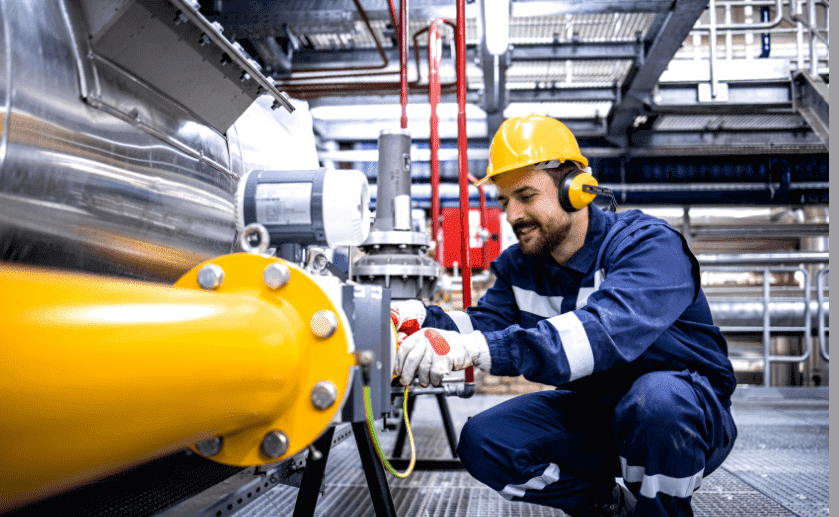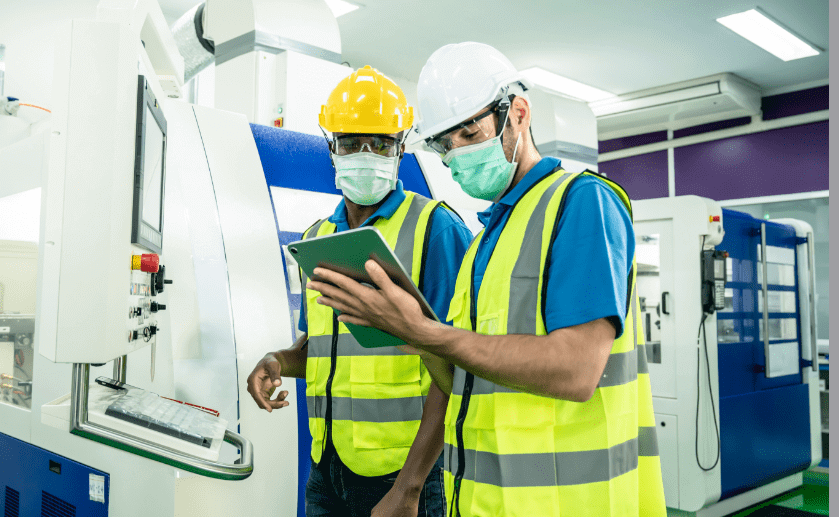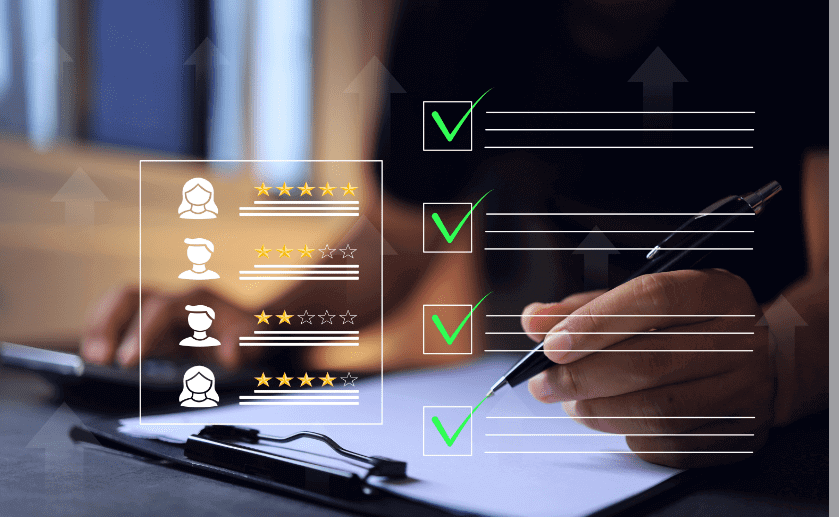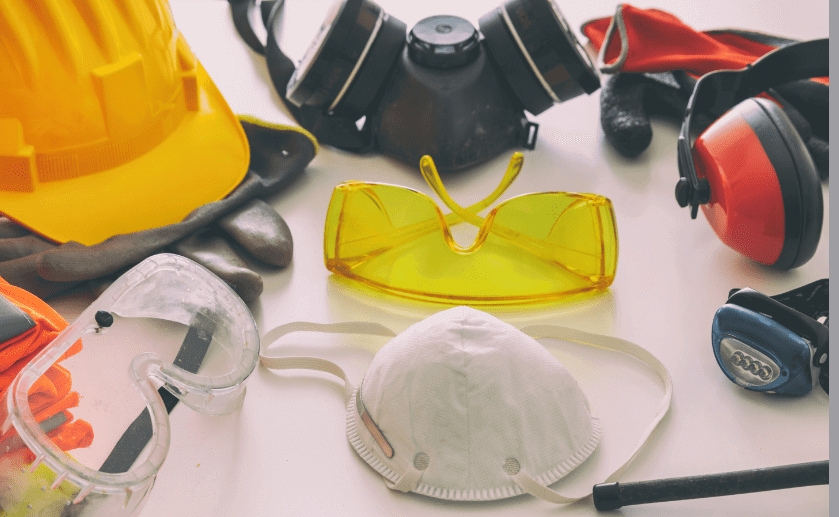7 Must-Ask Questions while Selecting the Perfect Ball Valve

7 Must-Ask Questions while Selecting the Perfect Ball Valve
Industrial ball valves control the flow and ensure your industrial processes’ smooth operation and safety. They are highly durable, reliable, and easy to use. ̧
However, industries face challenges when selecting the optimal ball valve for their specific application. Let’s look at the key questions you should ask before choosing ball valves.
Also Read: Key Factors to Consider When Selecting High-Pressure Valves
Seven Essential Questions to Ask Before You Buy Industrial Ball Valves
1. What type of media will flow through the ball valve?
The nature of the fluid type (liquid, gas, or semi-solid) passing through the pipeline greatly influences the industrial valve selection. Different media have varying ike corrosive, abrasive, and viscosity. This analysis will guide engineers in selecting ball valves of ideal material to be compatible with the media to prevent leaks, damages, or malfunction properties, such as corrosive, abrasive, and viscosity. This analysis will guide engineers in selecting ball valves of the ideal material to be compatible with the media to prevent leaks, damages, or malfunctions.
2. What is the right actuation method for the ball valve?
How you actuate (close and open) valves will influence their efficiency. Therefore, it is vital to understand the various types of ball valve actuation.
There are different types of ball valve actuation, such as:
- Pneumatic ball valve: These valves use compressed air to open and close the ball. They are ideal for applications where large opening and closing forces are required.
- Electric ball valve: Such valves use an electric motor to open and close the ball and are highly useful where precise control is required.
- Hydraulic ball valve: Here, a pressurized hydraulic fluid opens and closes the ball where large forces are required.
- Manual ball valve: These valves are operated by a handle and are often used in low-pressure systems.
In this regard, you have to consider these things:
- Frequency of operation
- Energy availability and complexity
- Actuation operations
- Control and reliability
For instance, pneumatic actuators are needed for frequent and fast operations, whereas electric actuators are ideal for a reliable power supply. Similarly, hydraulic ball valves are best suited for high-pressure applications where frequent operations are needed, and manual ones are the ideal bet for low-pressure applications that require occasional manual control.
3. What are the maximum and minimum temp & pressure ratings of the fluid passing through the pipeline?
Ball valves also have temperature and pressure ratings. The minimum and maximum values indicate the temperature and pressure range of the working fluid that valves can handle.
Why is adhering to these values important?
- High-temperature variation can cause non-uniform expansion and contraction, leading to cracks.
- Minimum and maximum values indicate the valve’s temperature and pressure range.
- Excessive fluid pressure can break the seal and cause premature wear, leaks, and safety hazards.
The number of times you open and close the valve in a year is known as its annual cycle rating. Ball valves are rated for a specific number of cycles. Using a valve over its annual cycle rating may hamper its durability. If you use ball valves to understand their cycle requirements, they can work for tens of thousands of operations without any performance issues.
5. How are you going to use the ball valve?
Different ball valves are available on the market depending on the nature of their operation.
- Shut-off vs. flow direction control:
Standard ball valves can completely restrict the fluid flow. However, specialized ball valves are also available if you need directional control.
- Multi-directional flow (3-way ball valves):
Three-way ball valves offer even more control by splitting the flow from a single source to two destinations.
6. How do you choose the right material for the ball valve?
The media flowing through the valve should be compatible with the materials of the valve’s body and internal components (ball, seat). Incompatible materials can corrode or weaken the seal, leading to safety hazards or malfunctions. Consider stronger options like Monel, Inconel, or alloys containing molybdenum, chromium, or nickel for highly corrosive fluids.
7. What certifications should the valve have?
It’s imperative to select ball valves with the right certifications relevant to the fluid type and application within your facility. Depending on your application, your ball valve and its actuator might require certifications from:
- ANSI (American National Standards Institute): verifies pressure and temperature ratings for pipe flanges for safe operations within desired limits
- NEMA (National Electrical Manufacturers Association): sets design standards for electric ball valves for reliable performance
- NSF International: offers guidelines for selecting ball valves in food, beverage, and pharmaceutical production facilities to safeguard public health
Also Read: How to Choose the Right Valve for your Industrial Requirement?
Looking for an ideal supplier for high-quality industrial ball valves for your specific applications?
Partner with Moglix Business! Visit our online store for more industrial tools and equipment.
3rd India Global Innovation Connect

3rd India Global Innovation Connect
Date: 7th June, 2024
Organizer: IGIC
About the Event: Mr. Sandeep Goel, Managing Director at Moglix, shared his insights on ‘Cracking the code on scaling up: Listening to those who did it’ at the 3rd India Global Innovation Connect in Bengaluru. The event emphasized crucial aspects like innovation, leadership, and market adaptation for a sustainable scaling strategy.
India Inc. expects transformative growth under new government

India Inc. expects transformative growth under new government
As technology rapidly evolves, we foresee a significant shift in India’s manufacturing and infrastructure sectors. Moglix aims to contribute to this transformation by providing advanced supply chain solutions and fostering innovation in the manufacturing landscape. This exciting phase presents a unique opportunity for all stakeholders to collaborate and harness the power of innovation.
Read MoreHow innovative approaches can optimize procurement approaches?

How innovative approaches can optimize procurement approaches?
In business, efficiency is everything. However, when it comes to procurement, where only 6% of companies agree to have full visibility of their supply chain, efficiency optimization matters even more. One of the studies revealed that procurement professionals spend one-third of their time handling manual mundane tasks. There are other performance bottlenecks that are affecting the process efficiency to a great extent. Let’s analyze top procurement challenges and learn some innovative ways to overcome them to improve efficiency with ease.
Traditional Procurement Challenges and Limitations
Traditional procurement methods typically rely on manual processes. Data may be siloed across departments, resulting in unwanted delays and performance inefficiencies.
As traditional procurement caters to a large number of average suppliers, businesses miss out on potential savings and innovation opportunities through strategic partnerships.
All these challenges can cause:
- Inflated costs due to reacting sourcing
- Lengthy approval cycles
- Missed opportunities for volume discounts
Operating with such slow, expensive procurement processes for a prolonged period can push a business into a competitive disadvantage.
On the other hand, companies leveraging innovative procurement approaches are more likely to thrive, innovate, and shape their sourcing and procurement lifecycle.
Different Ways of Procurement Optimization for High-Efficiency
Spend Analytics
Spend analytics gives you a clear picture of where your money goes. It analyzes your historical purchasing data to identify hidden costs and areas with excessive spending. You also get valuable data on buying trends and supplier performance to negotiate with a stronger hand.
Spend analytics are also useful in categorizing purchases to identify opportunities for standardization that translates to efficiency. You can use ERP systems to collect data from various departments and visualize them with business intelligence tools to analyze spending patterns and uncover areas for consolidation.
Also Read: Real-Time Analytics: The Driving Force Behind Responsive Supply Chains
Supplier Consolidation
Strategically reducing the number of vendors is one of the most effective methods to optimize your business’ procurement efficiency. When you purchase from a few suppliers, you get the chance to leverage better pricing terms and discounts due to a higher volume of orders.
Additionally, fewer suppliers means fewer invoices and lower processing costs. As mentioned earlier, you can take the help of spend analytics to identify categories for consolidation. You can also leverage supplier relationship management systems to centralize suppliers and efficiently manage supplier relationships with consolidated vendors.
Reverse Auction
Reverse auctions are undeniably innovative procurement strategies to drive prices down. Here, the traditional roles of suppliers and buyers are reversed. Unlike the traditional process, the buyer posts a request for a specific commodity or service. Then potential suppliers submit competitive bids in real time.
The winner is generally the supplier willing to do the job or provide service at low costs. There are dedicated reverse auction platforms where businesses can define their needs and manage the bidding process online. You can also integrate reverse auction platforms with your existing procurement systems for a smooth data exchange and task automation for easy management of the entire procurement cycle. Moglix utilized all of the tips shared above and a few more to increase the working hour efficiency of a leading cement manufacturer by 20% which was challenged by a fragmented supplier base, and non-standardization in pricing.
How to Optimize Indirect Procurement?
What is indirect procurement?
Indirect procurement involves purchasing goods or services that are not directly related to a business’s core production. This could include office supplies, facility management, travel expenses, and marketing services. As indirect procurement accounts for up to 80% of a company’s total purchases, it is imperative to optimize it with innovative strategies.
Here are some innovative methods to optimize indirect procurement:
- Use big data and spending analysis to identify hidden patterns and potential cost savings
- Implement a category management system to manage specific categories and identify innovative sourcing solutions
- Leverage cloud-based e-procurement platforms to automate workflows, streamline operations, and reduce administrative burdens
- Use online marketplaces dedicated to specific indirect procurement categories to access a large pool of vendors with low-price bids
Also Read: Digital Transformation in Procurement: The Current Trends and Future Directions
Nowadays procurement optimization requires modern technologies and approaches to address challenges emerging out of growing competition in the market. However, thoughtful implementation of these strategies is imperative to achieve significant procurement optimization that reflects recurring profit to the organization.
Are you looking to optimize your procurement through innovative methods? Leverage Moglix Procurement Solutions today!
FAQs
How to optimize product procurement?
An ideal product procurement optimization strategy should focus on acquiring the right products, at the right price, and at the right time. In this regard, businesses can use spend analysis and supplier consolidation to identify areas of cost reduction and make consolidated purchases for maximum discounts. They can also utilize an e-procurement process to automate routine tasks to save time and reduce operational costs.
What are the 4 stages of procurement?
The four stages of procurement are as follows:
Stage 1: identify goods/service requirements and outline the budget and specifications
Stage 2: find qualified vendors and select the best supplier through various methods
Stage 3: negotiate contracts, issue purchase orders, receive/ inspect goods or services, and manage supplier performance
Stage 4: release supplier payments and evaluate the procurement process for potential improvements
Mitigating Workplace Hazards With PPE

Mitigating Workplace Hazards With PPE
On the Birmingham High Speed 2 (HS2) rail link site, for instance, a contractor had a fatal accident. Although emergency services, such as Midlands Air Ambulance, were called, it was discovered that the contractor might not have been wearing enough personal protective equipment, which probably made the situation worse. The possible results of ignoring safety equipment in dangerous work situations are brought home by this incident.
Data from the International Labour Organisation (ILO) that indicates that around 2.3 million people die annually from diseases or accidents connected to their jobs highlights the significance of Personal Protective Equipment statistically even more. With almost 6,000 deaths per day, this emphasizes how urgently thorough safety precautions and equipment are needed.
This blog will discuss the many kinds of PPE available, outlining their particular applications and the laws that control their use. We’ll also discuss the role employers play in providing workers with the right Personal Protective Equipment to reduce risks at work and guarantee their safety. Business owners and safety officials will gain insightful knowledge on how to implement and maintain efficient safety protocols for employees.
Head Protection
Hard hats are the most often worn head protection. They shield against electrical hazards, impacts, and falling objects. They are available as Type II (top and lateral impact protection) and Type I (top-of-head impact protection). Safety standards, including OSHA and ANSI Z89.1, control the impact resistance and electrical insulating properties of hard hats.
Bump caps are lightweight head protection suitable for areas with low overhead hazards. They offer protection against minor bumps, scrapes, and lacerations. Bump caps are not designed to replace hard hats where significant impact hazards exist and may not meet all the same formal safety standards.
There are also specialized helmets for diverse tasks. These include:
- Welding helmets
- Firefighting helmets
- Electrical helmets
Key considerations
Always use head PPE that meets industry and workplace safety standards. ANSI and OSHA specifications require rigorous testing and performance to ensure Personal Protective Equipment provides adequate protection. Proper fit and regular inspections are key to keeping head PPE working properly.
Also Read: Things to Consider While Choosing Safety Helmets
Importance of Respiratory Protective Equipment in Industrial Settings
When a study was conducted way back in 2020 by Global Action Plan and Zehnder Clean Air Solutions in the UK, they found out that 440,000 workers are exposed to harmful air conditions. It is a matter of time before a similar kind of study is witnessed in the USA too. However, the solution lies in the Respiratory protective equipment (RPE). The reason is simple, it can be worn by anyone, it protects the user against all harmful gasses and particulate matter and it is cost effective. Whenever you consider RPE for your work, you can look for:
Air-Purifying Respirators (APRs)
When you look for APRs you will find two common types. Both of them consist of filters or cartridges but their utilities are different. Let’s understand:
- Disposable filtering facepieces (N95, etc.): We witnessed their importance during the pandemic. They block particulate matter (dust and some airborne pathogens) from entering the air.
- Half-mask or full-face respirators: This kind of RPE provides higher protection levels and uses replaceable cartridges for filtering glasses, vapours, or particulates.
Atmosphere-Supplying Respirators (ASRs)
ASRs supply clean air from an independent source. Types include:
- Supplied Air Respirators (SARs): Workers who enter into Confined spaces (tanks or tunnels) with dangerously low oxygen levels or highly toxic contaminants need it. There is a hose which supplies the clean air to the user via a hose.
- Self-Contained Breathing Apparatus (SCBA): This equipment is essential for reducing the inhalation of toxins.It enables breathable air in unbreathable environments, such as smoke in a building or toxic gas outbreaks.
Also Read: 5 Trends Driving the Safety Equipment Industry
Compliance and Standards
As a safety officer, selecting Respiratory Protective Equipment (RPE) requires adherence to key compliances. First, accurately identify workplace hazards to ensure the chosen RPE provides adequate protection. Second, select RPE that suits the wearer, task, and environment, taking into account fit and comfort. Third, ensure all RPE meets legal standards, such as CE marking and specific regulations set by OSHA or local authorities. Finally, consult with employees and safety representatives to ensure the RPE meets their needs and job demands, fostering a collaborative approach to safety.
Face and Eye Protection
Thousands of workers sustain serious eye injuries annually; some even lose their sight. These injuries can be avoided, claims the Occupational Safety and Health Administration (OSHA), with appropriately chosen and worn eye and face protection.
Understanding Workplace Hazards
- Impact Hazards: Most eye injuries result from tiny particles like metal slivers or wood chips hitting or scraping the eye. Serious injury can result from these being blown by the wind or thrown from tools.
- Chemical and thermal burns are common in settings using industrial chemicals or cleaning products. One hospital study conducted by the National Institute for Occupational Safety and Health (NIOSH), for example, reported that workers had eye burns from a cleaning solution containing acetic acid, peracetic acid, and hydrogen peroxide.
Also Read: How India is Tackling Workplace Hazards Head-On?
Selecting the Right Protective Gear
- Impact and Particle Protection: To guard against flying particles, wear goggles or side shields on ANSI-approved safety glasses.
- Chemical Burns: When handling hazardous chemicals or cleaning products, wear goggles or face shields to avoid splashes that can damage your eyes.
- Thermal burns in welding: OSHA mandates that welders wear helmets with properly shaded lenses to guard against sparks and high heat (OSHA Standard §1910.252(b)(2)).
- Laser Exposure: For jobs involving lasers, it is imperative to wear laser safety goggles that block the particular wavelength, following safety regulations such as §1926.102(c)(2)(i), which outlines the optical density required for protection.
Employers are responsible for ensuring that all employees can access and use the proper kind and quality of protective eyewear. This includes providing equipment to employees at no cost and covering prescription glasses when required.
Prospective Insights
As a Business owner or safety officer,, you face daily challenges in protecting workers from preventable injuries. The recent HS2 site incident and International Labour Organisation data underscore the vital role of Personal Protective Equipment (PPE) in safeguarding employees. Compliance with safety regulations and proper Personal Protective Equipment use are crucial in mitigating risks. Each workplace has unique hazards that demand tailored safety measures. To enhance your safety protocols effectively, consider hiring a consultant such as Moglix who can help you learn more by providing specialized insights and strategies tailored to your specific needs.
How Segmenting Suppliers can boost your profits

How Segmenting Suppliers can boost your profits
Vendor management improves how vendors affect the business. It centres on working together, following rules, and making payments efficiently. It decreases risks such as fraud. It simplifies supply problems using tactics like grouping suppliers.
Segmentation categorizes vendors based on spending volume and risk. It enhances targeted management. Vendor consolidationreduces vendor numbers, streamlines processes, and cuts costs. This blog explores how these strategies improve supplier management and business efficiency.
Understanding Supplier Segmentation
Supplier segmentation is one of the fundamentals of supplier relationship management (SRM). It categorizes suppliers based on specific criteria, enabling the efficient allocation of resources.
Benefits
Success in vendor management depends on having a well-designed supplier segmentation model. Other supplier segmentation model benefits are:
- Focuses on key suppliers driving the most value.
- Allows tailored management approaches.
- Realizes efficiency gains in procurement, inventory, and supply chain finance.
Also Read: Mastering the Art of Supplier Relationship Management (SRM)
Critical Factors for Segmenting Suppliers:
Strategic suppliers typically represent about 10% – 15% of the total number of suppliers in a database. The Kraljic matrix is used in procurement and supply chain management to categorize goods and services based on supply risk and profit impact. This classification, derived from the Kraljic matrix, can be further refined to create detailed sub-groups within each quadrant, enhancing the precision of supplier management.
Statistics and Key Factors for Segmenting Suppliers:
- Spend, Value, and Strategic Importance: Suppliers are categorized based on spending volume and business importance.
- Risk and Performance: Suppliers should also be assessed regarding potential supply disruption or financial instability.
- Complexity of Products/Services, Innovation, and Improvement: Suppliers are segmented based on their required specialized management strategies for complex products/services.
- Geographic Location and Business Unit Interaction: Suppliers’ segmentation is determined by the impact of their global or regional presence on logistics and market reach .
Also Read: How Businesses Can Drive Efficiency Through Vendor Consolidation?
The Way Forward
Supplier segmentation can elevate a business’s potential to the next level. Here is a case: Moglix implemented a vendor management system for a leading tyre manufacturer with operations across India and Europe, dealing with over 600 suppliers and 8000+ line items.
This system addressed challenges like fragmented suppliers, sourcing inefficiencies, and delayed deliveries by improving supply chain visibility and efficiency. The solution resulted in a 3% savings on the total cost of ownership, optimizing the manufacturer’s working capital, real estate, and resource bandwidth.
Suppose an organization is dealing with supply chain issues. In that case, it can seek expert consultation in the industry who can provide real-time insights, understand its core issues, and enhance its vendor management capabilities. For this, it can connect with Moglix for a consultation.
Greening the Shopfloor: The Adoption of Sustainable Manufacturing Practices

Greening the Shopfloor: The Adoption of Sustainable Manufacturing Practices
Transitioning to sustainable manufacturing requires a collective effort. Businesses need to invest in new technologies and processes, while governments can play a crucial role by enacting legislation that incentivizes sustainable practices and discourages environmentally damaging ones. Consumers also have a role to play by supporting brands committed to sustainability and making informed purchasing decisions.
Read MoreEmpowering MSMEs: Unlocking India’s Trillion-Dollar Manufacturing Potential

Empowering MSMEs: Unlocking India’s Trillion-Dollar Manufacturing Potential
By empowering MSMEs, India can realize its vision of a robust trillion-dollar manufacturing sector, fueling economic prosperity and sustainable development
Read MoreBehind the wheel: How procurement will steer the automotive industry in the age of digitisation

Behind the wheel: How procurement will steer the automotive industry in the age of digitisation
By prioritizing digitization and sustainability, automotive procurement teams can become powerful engines for positive change. They can ensure the smooth flow of materials, optimize costs, and deliver vehicles that are not only technologically advanced but also environmentally responsible.
Read MoreStay Safe, Get Gear: Your Guide to Industrial Safety Equipements

Stay Safe, Get Gear: Your Guide to Industrial Safety Equipements
Safety equipment in industries prevents fatal calamities. According to government data, three workers in Indian Factories perish daily on average due to fundamental safety precautions not being followed.
The organisation’s procurement and safety officers are in charge of choosing safety gear. This blog will guide you in choosing industrial safety gear such as safety shoes, helmets, face protection, and gloves.
Guide to Selecting Industrial Safety Equipment
Here is the breakthrough of the factors to consider before buying any safety equipment from suppliers:
For Safety Shoes
Safety Shoes are made to protect workers on the job. Before choosing your Safety shoes, you must:
- Identify specific dangers in your workplace, such as the risk of falling objects, electrical hazards, or exposure to chemicals.
- Ensure the footwear meets industry safety standards and regulations, such as ASTM F-2412-2005 or ANSI Z41-1999.
- Select shoes that fit well and are comfortable for long periods. Comfortable footwear prevents foot fatigue, enhances worker productivity, and reduces the risk of injury.
- Choose shoes made from materials that offer protection against the specific hazards of your environment, such as leather for durability or rubber for electrical resistance. Durable materials ensure longevity and sustained protection for workers.
- Depending on the risks identified in your workplace, look for features like steel toe caps, slip-resistant soles, and puncture-resistant materials. These features provide additional protection against common workplace hazards, reducing the risk of injury.
- Quality and Brand Reputation: Opt for reputable brands known for high-quality and durable safety shoes. Choosing established brands ensures reliability and consistency in performance, providing peace of mind to workers and employers.
Also Read: An insiders Knowing Difference between Safety Shoes and Work Boots
For Helmet
Safety Helmets protect the workers from fatal injuries.
Purchasing considerations for safety helmets:
- Ensure the helmet meets international safety standards like ANSI/ISEA Z89.1, CSA Z94.1, or EN 397, guaranteeing rigorous testing for impact resistance and electrical insulation.
- Different types are designed for specific hazards, such as hard hats for falling objects and electrical hazards. Others may offer additional features like face shields or earmuffs.
- Helmets are usually made from materials like HDPE, ABS, or fibreglass. Consider durability, weight, comfort, and ventilation features.
- A properly fitting helmet is crucial. Look for adjustable suspension systems and chin straps for a secure fit. Comfort is vital for long-term wear.
- Depending on job requirements, helmets with integrated eye protection, reflective strips, or accessory slots for headlamps and hearing protection may be necessary.
- Regularly inspect helmets for damage or wear. Follow the manufacturer’s guidelines for cleaning and storage to maintain their protective effectiveness.
Also Read: Things to Consider While Choosing Safety Helmets
For Face Protection
Here are the most important points to consider for choosing face protection:
-
The
first and most crucial step is to identify the specific hazards
present in your work environment. Consider the following:
- Impact: Flying chips, debris, or other projectiles.
- Chemical Splash: Acids, bases, or other harsh chemicals.
- Heat: Sparks, molten metal, or extreme temperatures.
- Optical Radiation: Welding arcs, lasers, or intense UV light.
- Dust or Biological Hazards: Fine particles or infectious materials.
-
Once
you understand the hazards, choose the appropriate protection:
- Safety Glasses: Protect against moderate impact and small particles.
- Goggles: Offer a tight seal, protecting against chemical splashes, dust, and some impact.
- Face Shields: Provide full-face coverage against larger impacts, splashes, and some heat exposure. Worn in conjunction with safety glasses or goggles for optimal protection.
- Welding Helmets: Specialized protection with shaded lenses for welding and similar activities.
-
The
material of the face protection is essential for durability and
resistance:
- Polycarbonate: Offers excellent impact resistance and is common in most safety gear.
- Chemical Resistant Materials: Consult a compatibility chart against the specific chemicals in your workplace.
- Heat-resistant Materials: Look for specialized materials for high-temperature environments.
-
Proper
fit prevents gaps, ensuring protection. Adjustable straps help
customize the fit. Comfort is crucial, as uncomfortable PPE is less
likely to be worn correctly.
- Always ensure the face protection you choose adheres to relevant safety standards, such as ANSI Z87.1 (USA), EN 166 (Europe), or your country’s specific standards. Check for markings on the equipment.
Important Points to Remember:
- Eye protection is often specialized. What works for metal grinding might not be appropriate for chemical handling.
- Face shields are usually considered secondary protection and should be worn with safety glasses or goggles.
- Consult your company’s safety guidelines and resources for specific requirements in your work area.
For Safety Gloves
A Concerning Statistic: Hand injuries are shockingly common in industrial settings. The Bureau of Labor Statistics reports that hand injuries account for a significant portion of all workplace accidents.
Key Considerations for Choosing Industrial Safety Gloves
-
Just
like with face protection, start by identifying the specific
threats you’ll face:
- Look for gloves with cut-resistant materials like Kevlar or specialized metal mesh.
- Check chemical resistance charts provided by glove manufacturers to ensure the glove’s material is compatible with the chemicals you handle.
- Choose gloves with heat insulation or thermal lining for temperature extremes.
- If sharp objects are a risk, consider additional puncture resistance.
- Electricians need specialized insulating gloves with voltage ratings.
-
Glove
materials make all the difference:
- Leather: Durable and offers good cut and abrasion resistance.
- Nitrile, Neoprene, or PVC: Excellent chemical resistance (check compatibility charts).
- Kevlar: Supreme cut resistance.
- Specialty Materials: Consider aluminized gloves for heat and chainmail for extreme cut hazards, etc.
-
Ill-fitting
gloves are clumsy and increase risk. Too loose and they slip; too
tight and they restrict movement. Look for snug fits with
flexibility for your specific tasks.
- Don’t
sacrifice the ability to handle objects for the sake of protection.
Balance the required protection with the need for precision and
control. Consider thinner gloves with high cut resistance where
appropriate.
- Ensure
the gloves you choose meet the required safety standards for your
industry, such as ANSI/ISEA (USA) or EN (Europe). Look for markings
on the gloves indicating compliance.
Pro Tip: No single glove is perfect for everything. You might need multiple types for different tasks. Consult safety supply resources and your company’s guidelines to make the best decisions.
Also Read: 5 Trends Driving the Safety Equipment Industry
After exploring this guide, you’re now prepared to enhance workplace safety by selecting the right safety equipment. To refine your choices consider consulting with industrial experts such as Moglix on safety equipment and get the best guidance.
